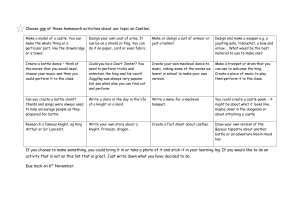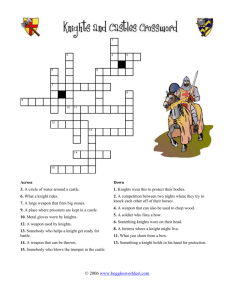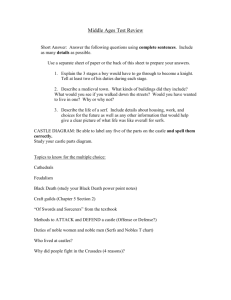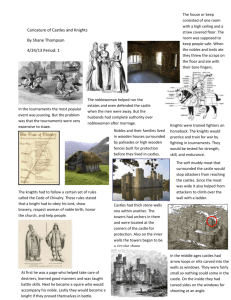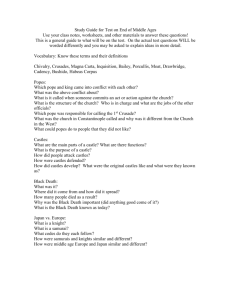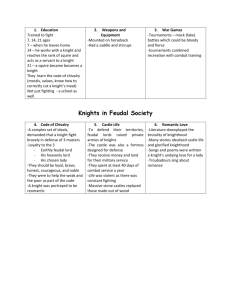Slide 1
advertisement
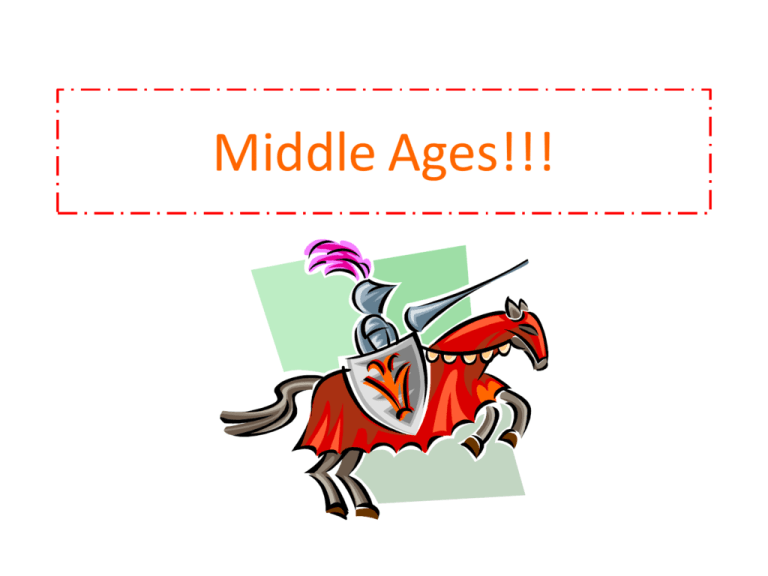
Middle Ages!!! People •Most people in the Middle Ages were peasants. They worked for their lords in exchange for protection; they had difficult and miserable lives. Another name for them is serfs. •Shepherds tended the sheep of the manor. •Some people were troubadours; they often sang love songs, gallant deeds of knights, and sometimes delivered messages this way. •Pilgrims-Medieval churchmen who made pilgrimages to places where Jesus lived and died to ask forgiveness and blessings. •Monks- men who left the company of ordinary men to live together away from worldly temptations and took vows of obedience. •Nuns- women who left their homes to live together to save their souls •Bishops- noblemen of the church who ruled over large pieces of land and had knights under them. •Knights-Crusaders. Noblemen who helped try recapture the Holy Lands. There were many other people, but these are the most known and basic ones. Castles • Castles were great at protecting against attacks. A king or queen usually lived in a castle. (not always) A castle’s wall was extremely thick. A moat usually surrounded the castle. A drawbridge over the moat was the entrance to a castle and could be pulled shut. A postern gate was the secret back exit of the castle. A portcullis, or a kind of gate made of metal bars, protected the castle because it could drop down from the ceiling and block the way to the castle. Castles were often built on rocky ledges because it prevented the enemy from weakening the castle walls by digging tunnels. Murder holes were built above the entrance and castles to drop things on any enemies below. Arrow slits were also built into the towers to allow archers to fire on incoming enemies with out being able to be hurt themselves. Feudal System The Feudal system was basically like the pyramid displayed. People higher up in the pyramid were richer and lived Greater luxuriously. People at Noble the bottom lived poor and miserable and were considered the equivalent of Lesser animals. nobles Tenants of lesser nobles (serfs) Tenants of lesser nobles (serfs) KING Greater Noble Lesser nobles Lesser nobles Tenants of lesser nobles (serfs) Tenants of lesser nobles (serfs) Knights • Knights were one of three kinds of fighting men in the Middle Agesfootmen, archers, and knights. To become a knight, a young boy (about 6 years old) was sent off to a castle to become a page. (A young knight in training) A page usually did the knight’s or squire’s dirty chores and ultimately began his basic training. The next step was becoming a squire. (step right before a knight) The squire began advanced training and learned the things a knight must do. Then, finally, the squire could be dubbed a knight. The squire would be tapped on the shoulder by his master’s sword, along with other religious ceremonies. Then he would be a knight. Knights would serve their king or lord when need be. They would fight for them or in battle. They were by far the most dangerous fighters- it was very hard to wound a knight in all his armor. Swords would bounce off him and arrows too. However, a knight’s armor was very heavy- maybe 60 pounds or more. If a knight was knocked onto the ground or off his horse, he could suffocate under the weight of his own armor! Attack & Defense There were many weapons and tactics for attacking and defending a castle. A castle was surrounded by a moat over which there was a drawbridge to keep enemies out. Mahicolations (or holes in the ceiling/walls) were used to drop stones, boiling liquids, etc. on attackers. A portcullis was like a metal gate at the entrance that could be dropped down from above. To attack, one weapon used was a ballista-A giant, powerful, acurrrate and destructive crossbow.
